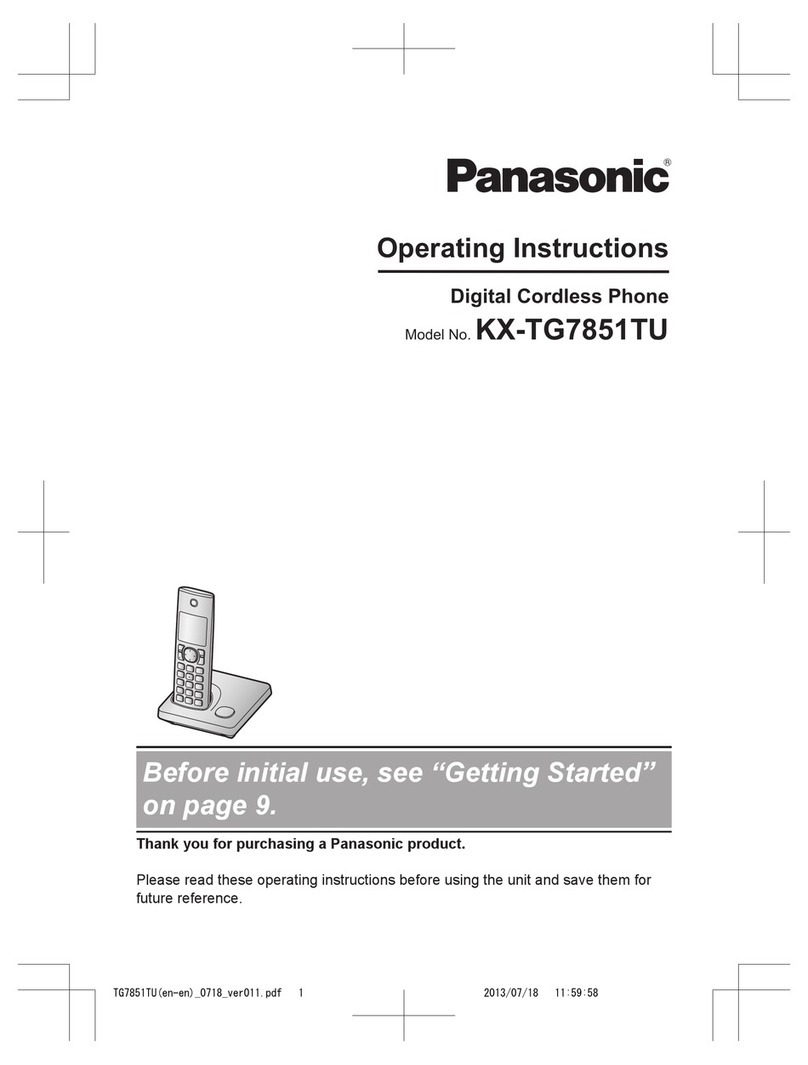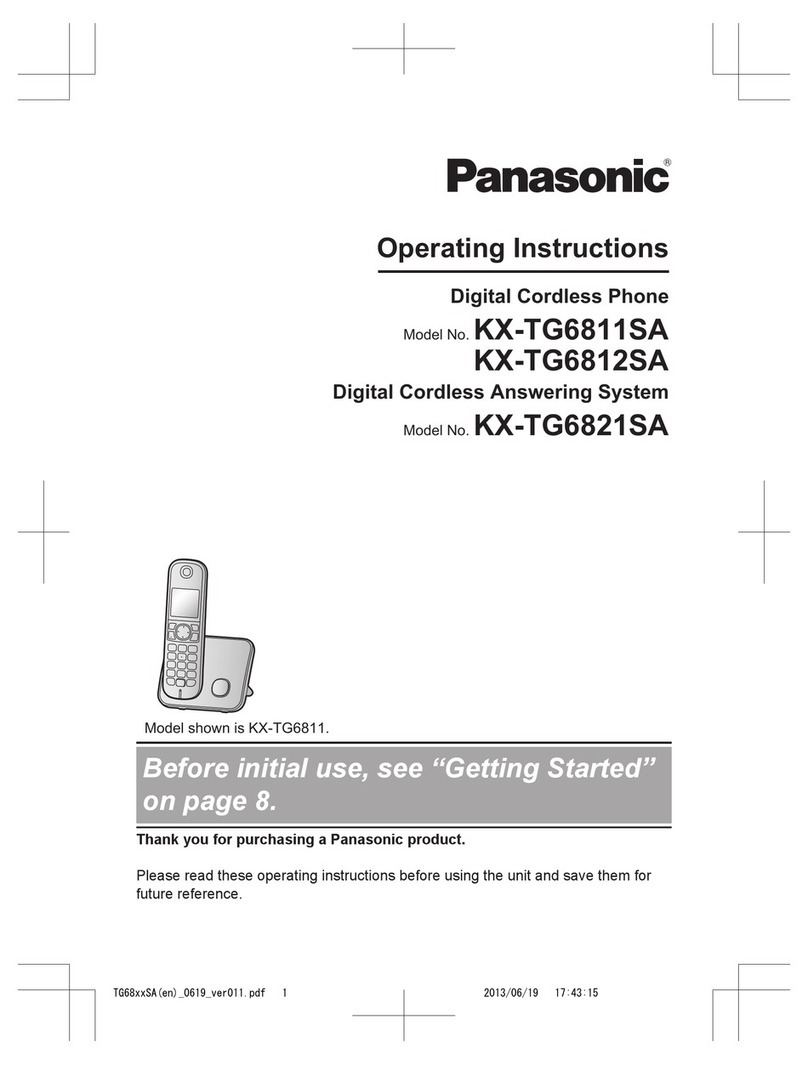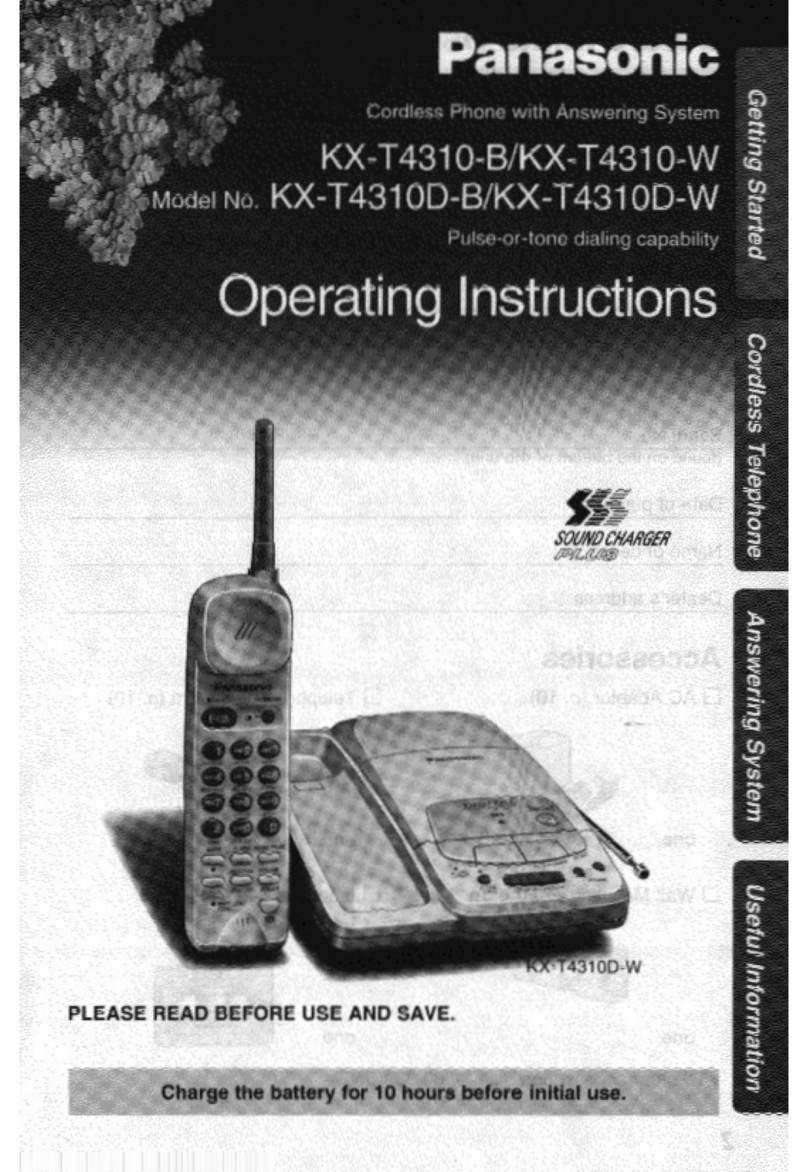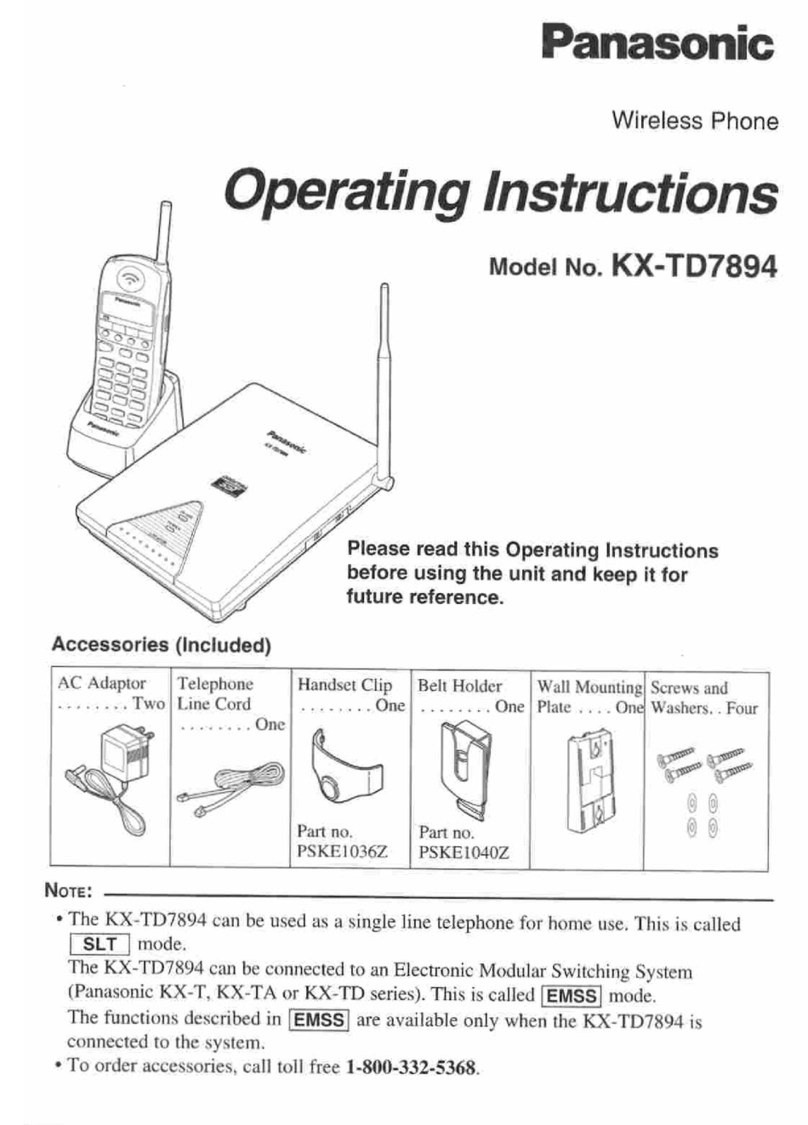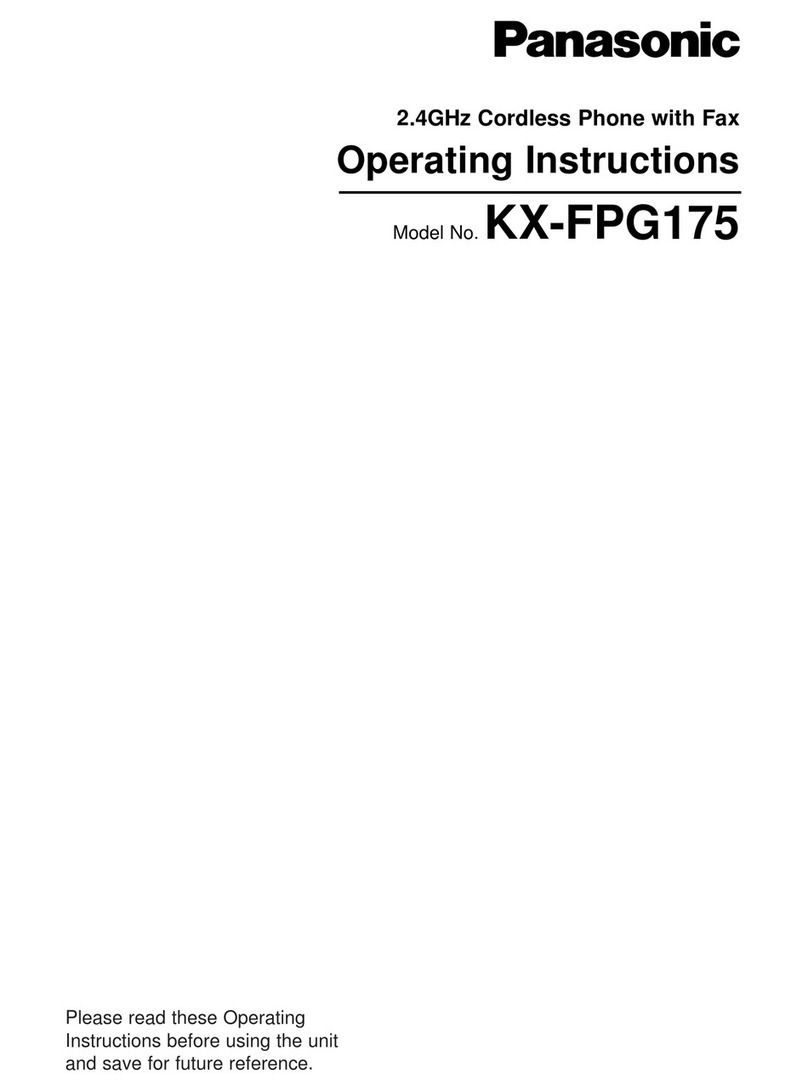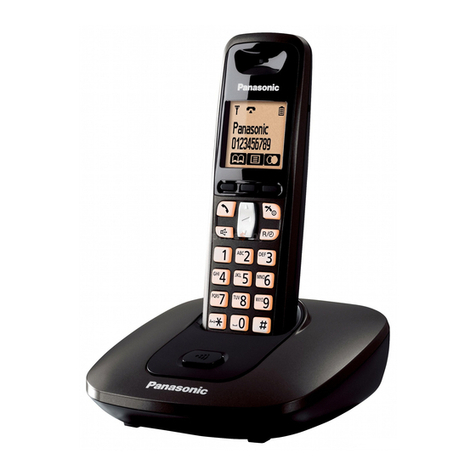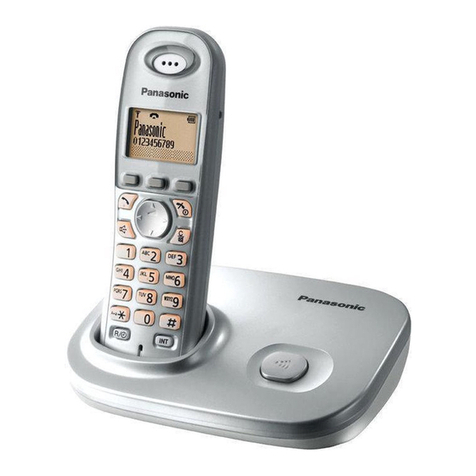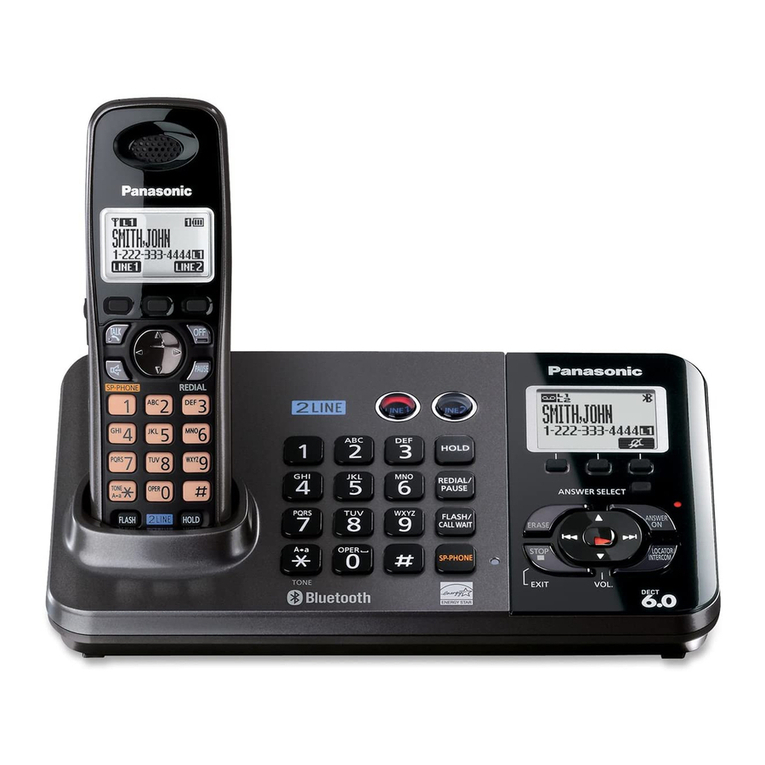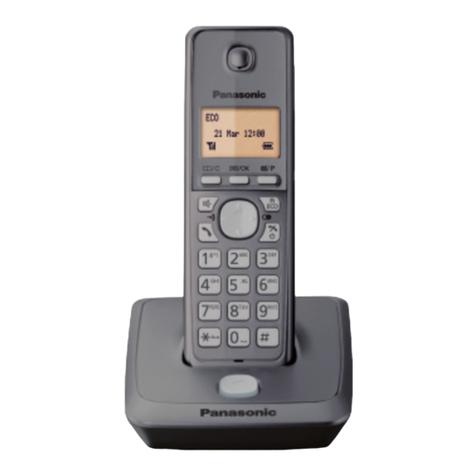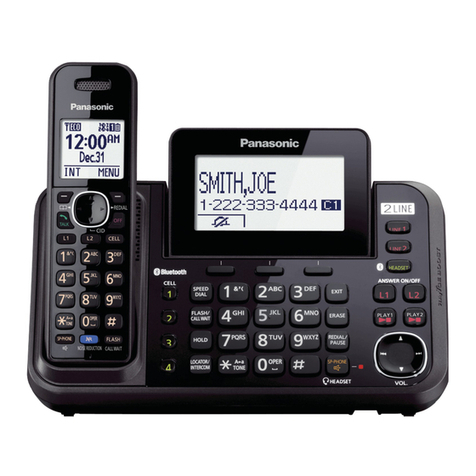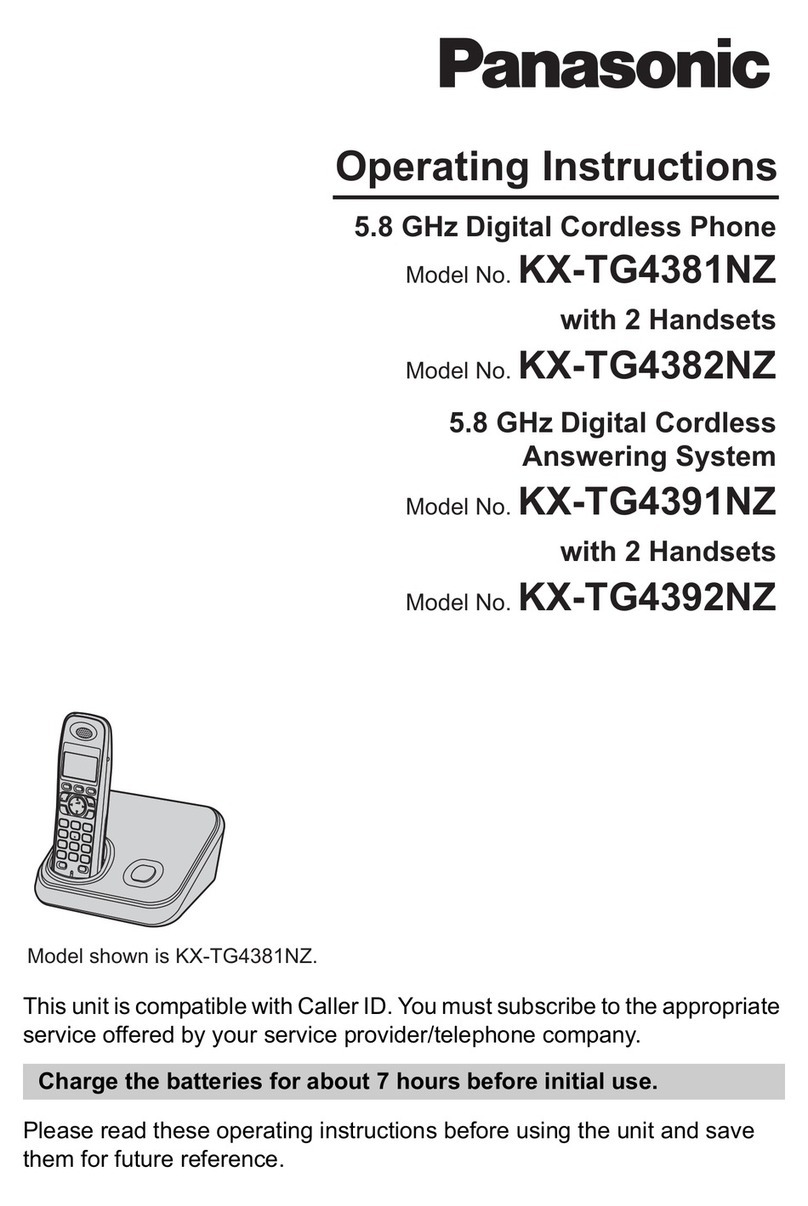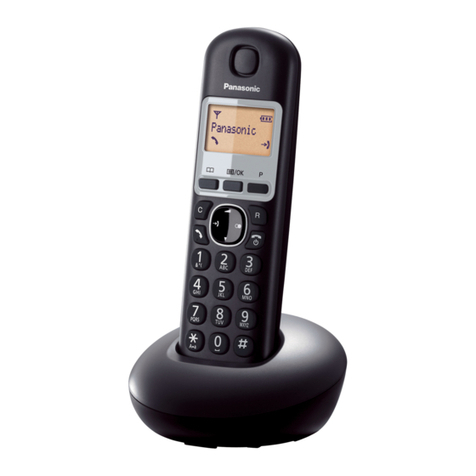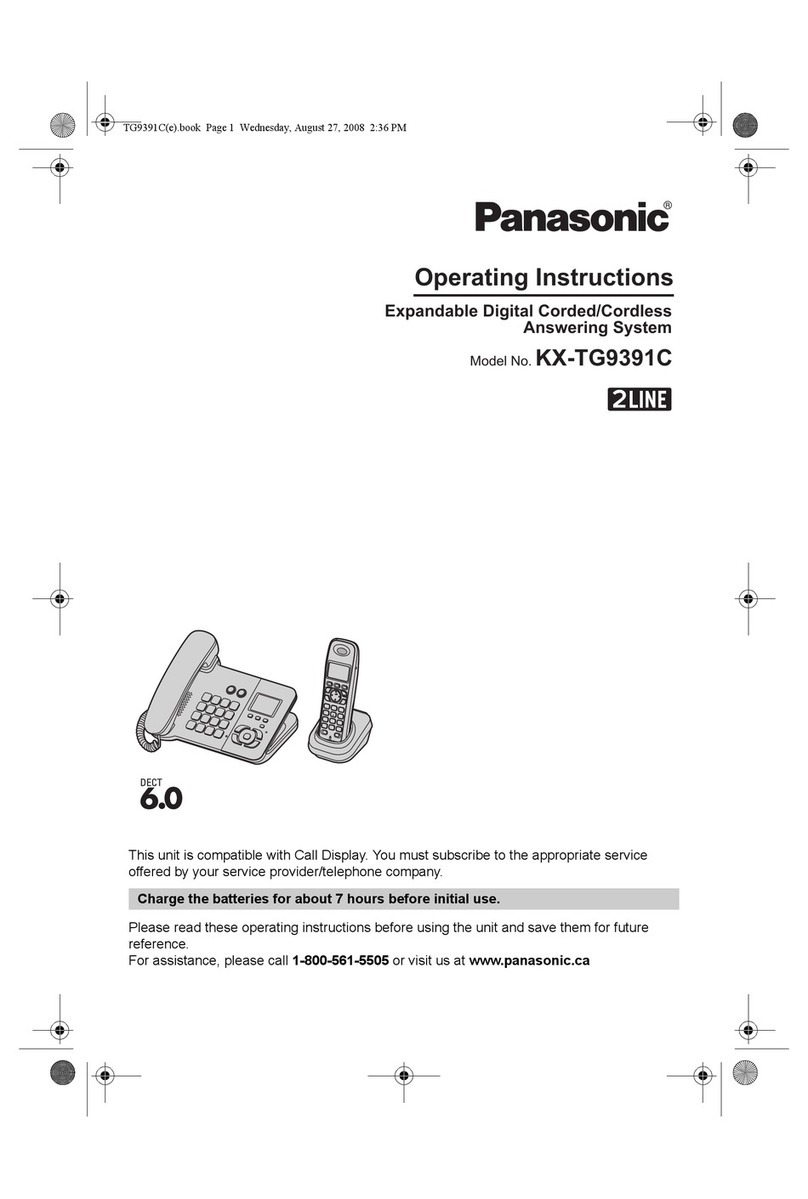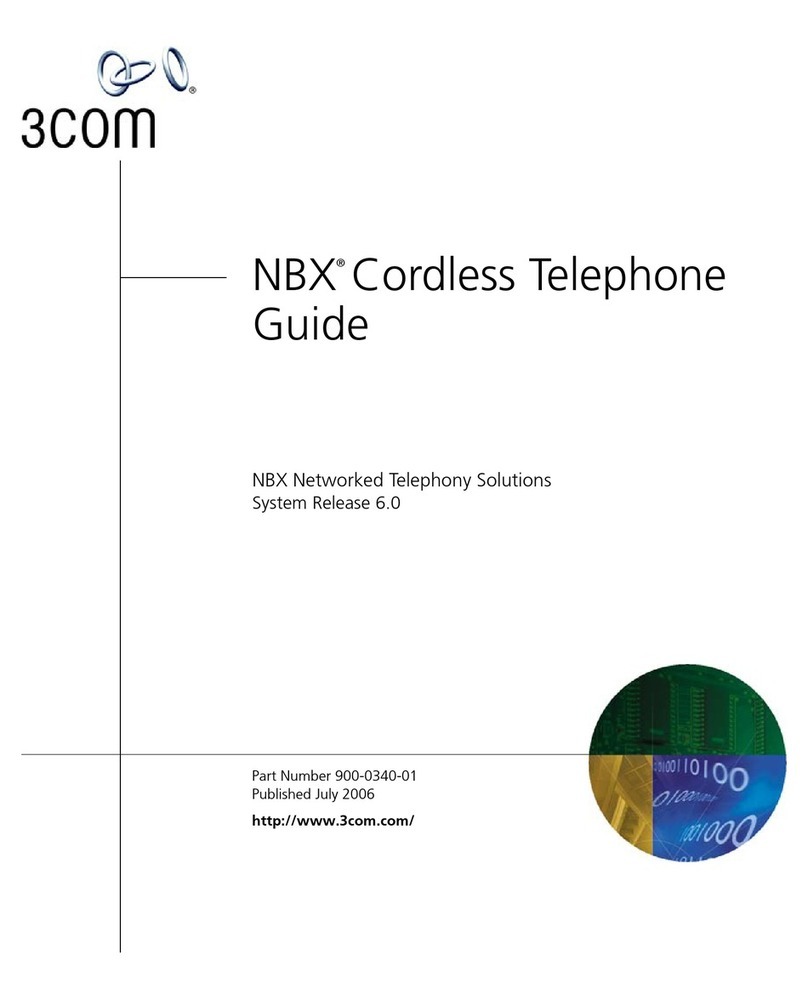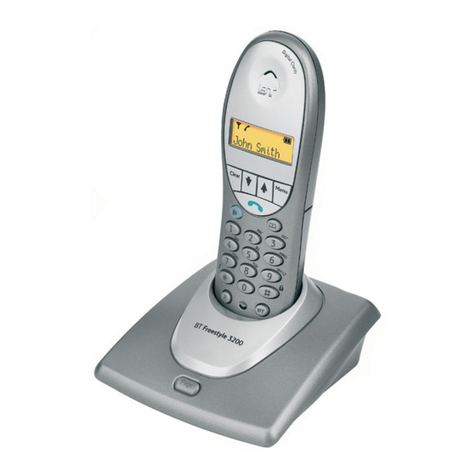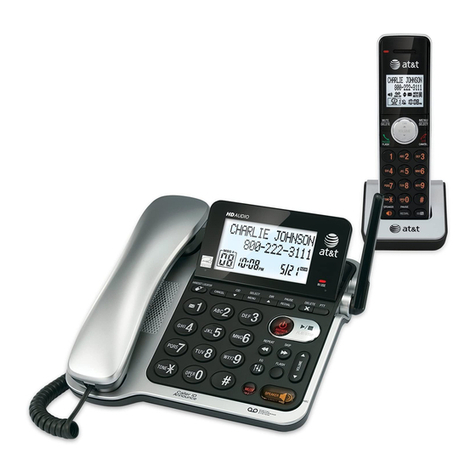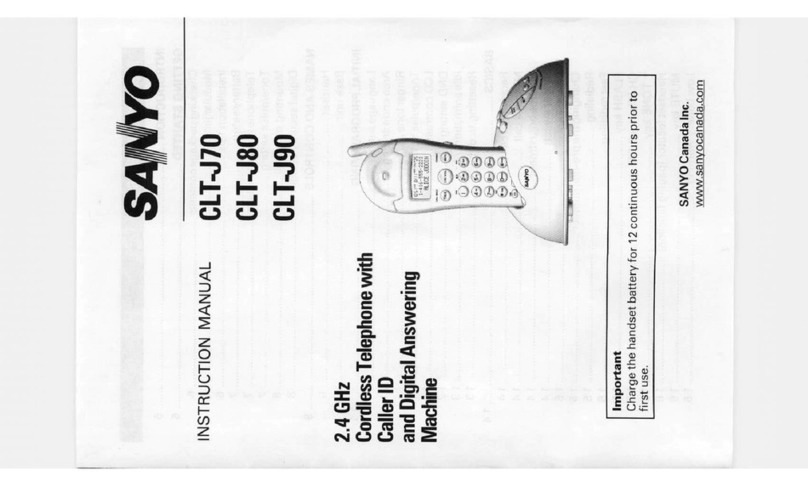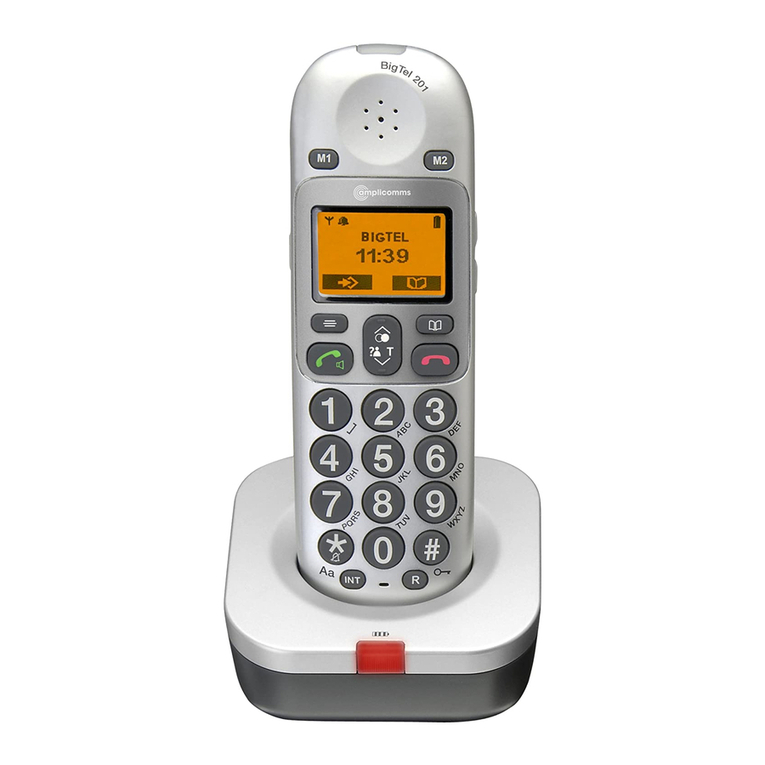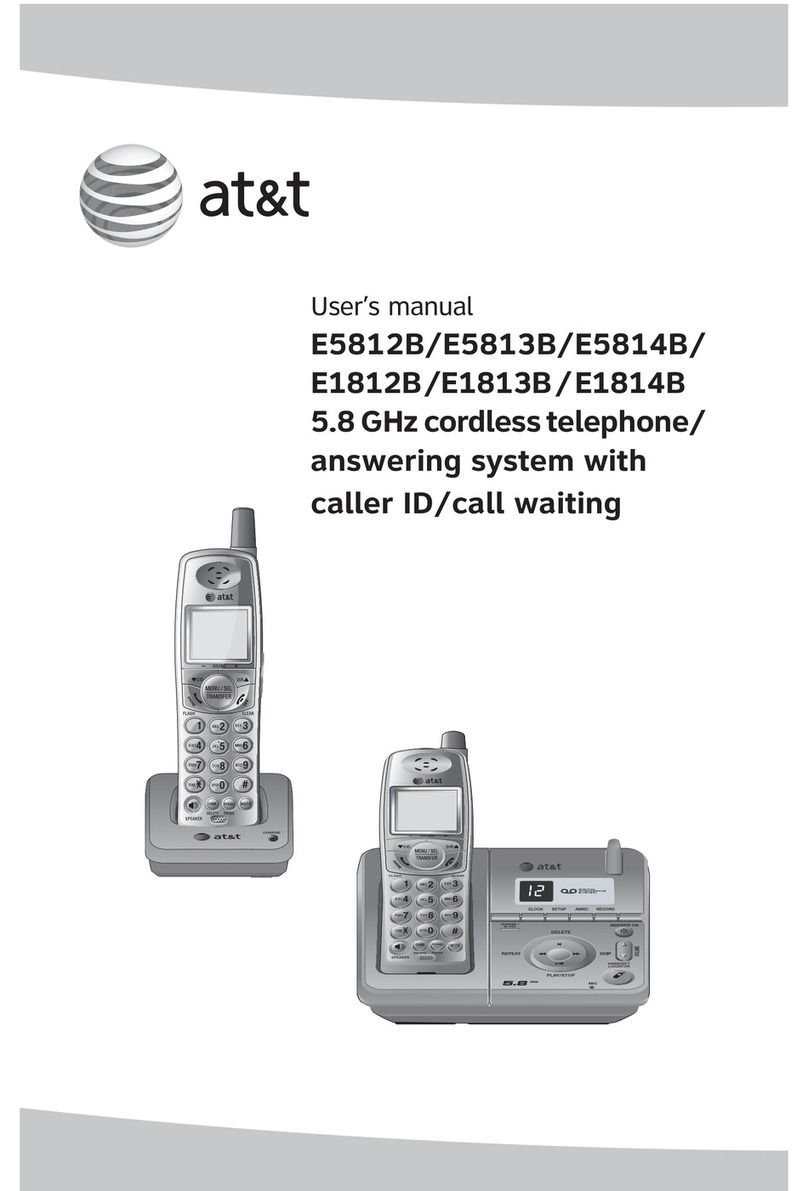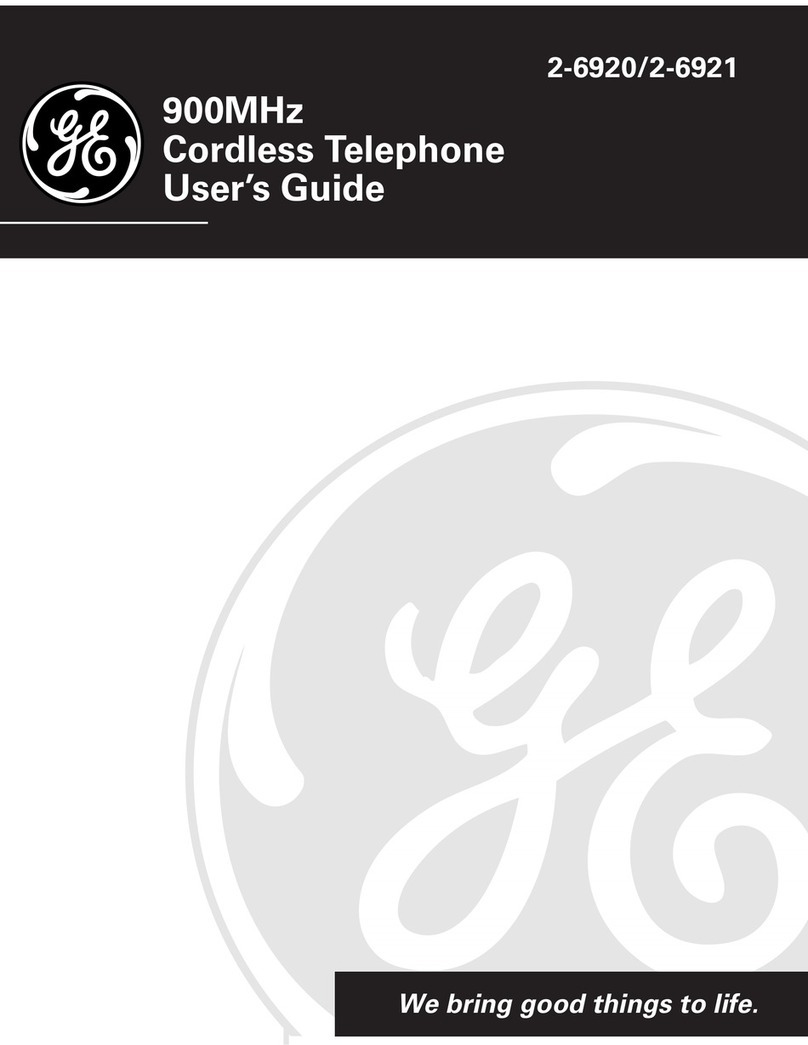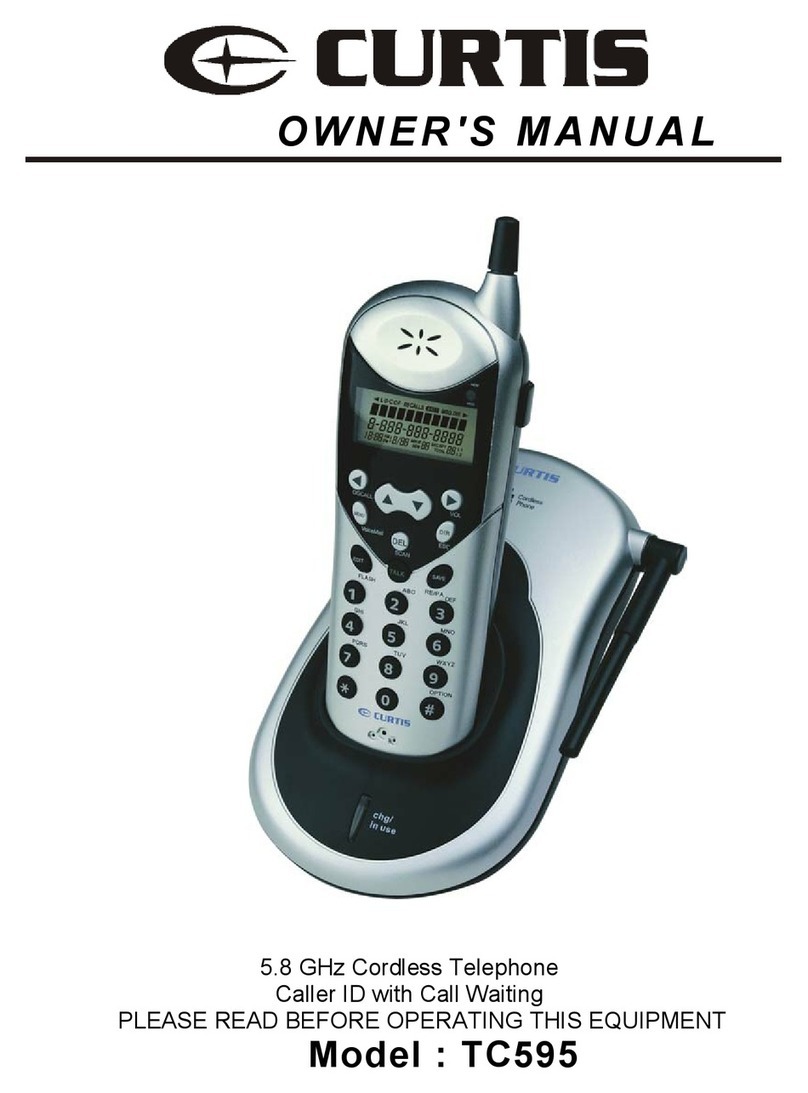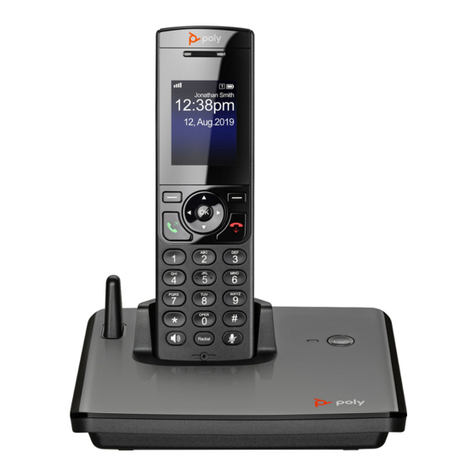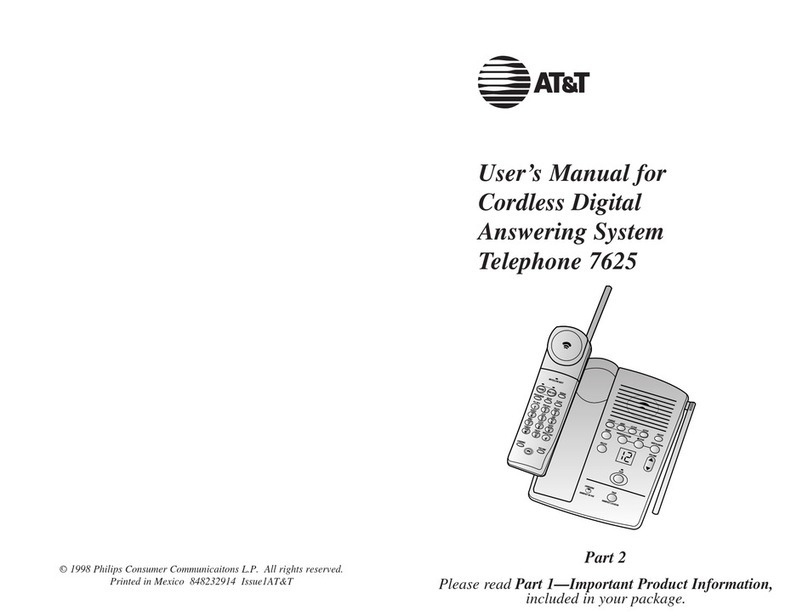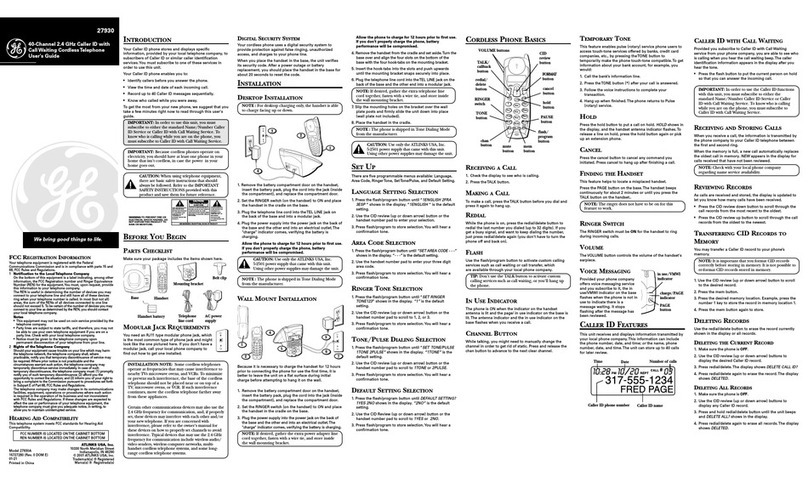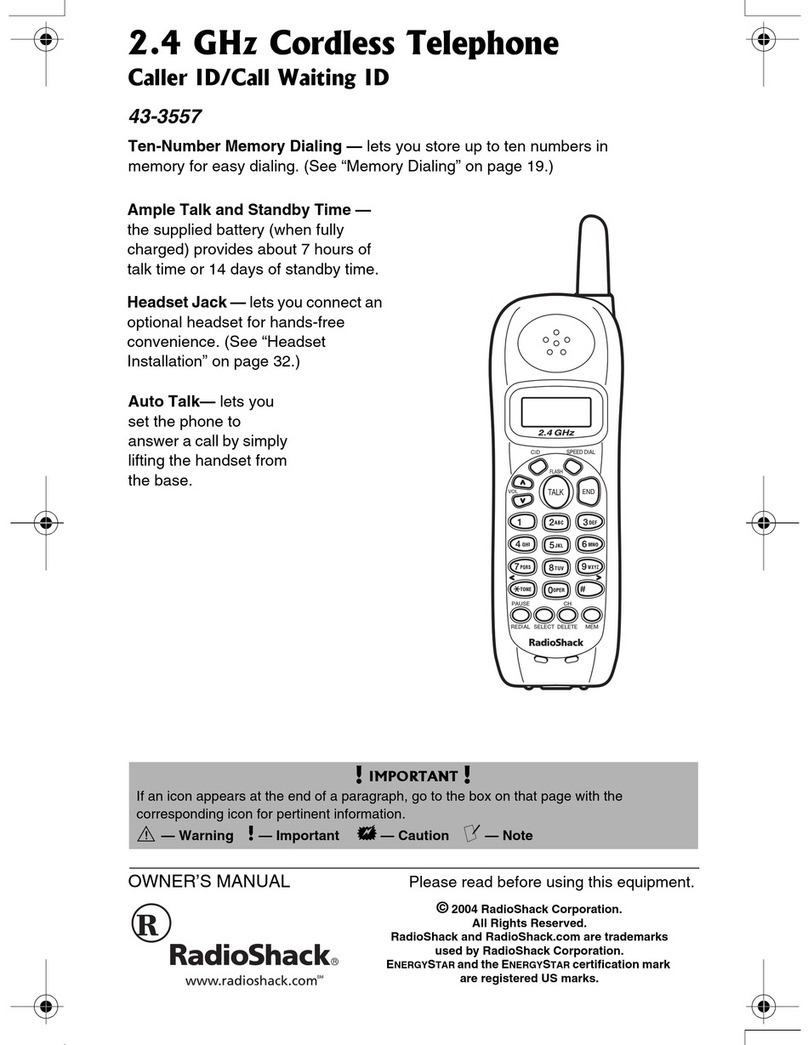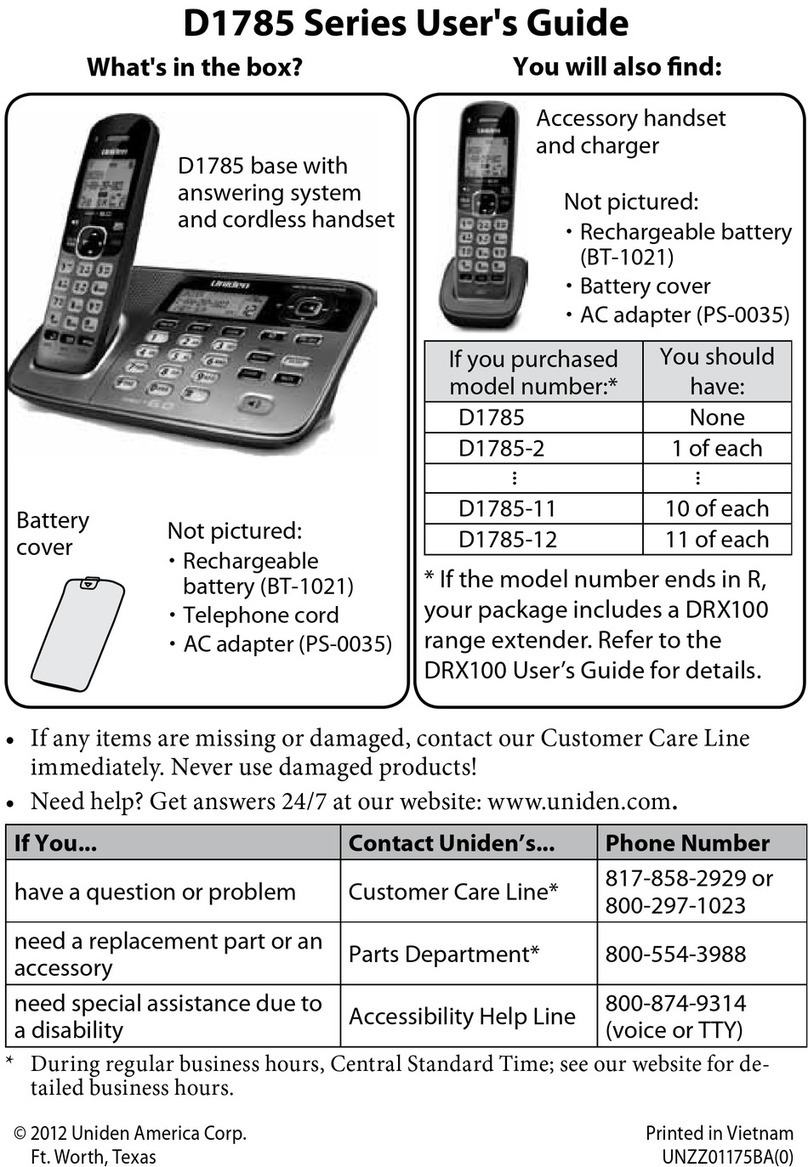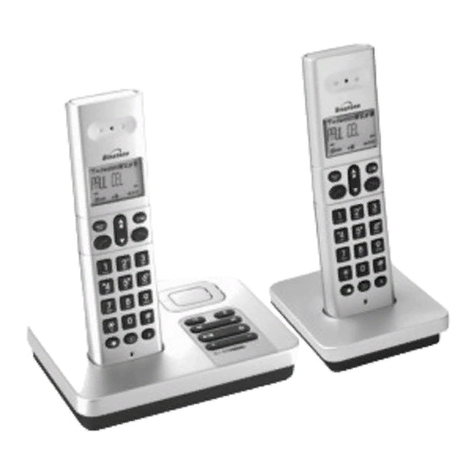4-H Important Safety Instructions
When usmg this und, basts safety precaubons should always be followedto
reduce the risk of fire, electnc shock, or personal tnlury
1- Read and understand all mstructtons
2 - Follow all warnings and instruchonsmarked on this unit
3 - Unplug this umt from AC outlets before cleaning Do not use liquid or aerosol
cleaners Use a damp cloth for cleanmg
4 - Do not use th_sunit near water, for example, near a bathtub, washbowl,
kitchen sink. or the like
5-Place this unit securely on a stable surface Senous damage and/or tnlury
may result =fthe unit falls
6 - Do not cover slots and openings on the unit They are prowded for venttlahon
and protect=onagainst overheating Never place the unit near redlators, or tn
a place where proper venlllahon ts not provided
7 - Use only the power source marked on the unit If you are not sure of the type
of power supphedto your home, consult your dealer or local power company
8 - Do not place Oblects on the power cord Install the unit where no one can
step or trip on the cord
9-Do not overload wall outlets and extensEoncords This can result mthe r_k of
fireor electric shock
t0 - Never push any objects through slots te this unit This may result in the risk
of fire or electric shock, Never spdl any liquid on the unit
11 - To reduce the risk of electric shock, do not disassemble this und Take the
unit to an authorized serv_center when serwce is required OpenJng or
removing covers ray expose you to dangerous voltages or other risks
Incorrect reasserbly can cause electric shock when the unit is subsequentry
used
12 - Unplug this unit from the wall outlet and refer servicing to an authorized
servtcanter when the following condtbons occur
A When the power supply cord or plug is damaged or frayed
B If liquid has been spilled intothe unrt
C If the un_lhas been exposed to rain or water
D If the und does not work normally by following the operatlr_g tnstruohons
Adlust only controls covered by the oporattng instructions
Improper adjustment may require extensive work by an authonzed
servlcenter
E If the unit has been dropped or physically damaged
F If the und exhibits a distract change m performance
13 - During thunderstorms, avoid usJngtelephones except cordless types
There may be a remote nsk of an electric shock from lightning
14 - Do hal use this und to report a gas leak, when tn the vicinity of the leak
SAVE THESE INSTRUCTIONS
CAUTION'
To reduce the risk of f_reor m_ury to persons, read and followthese instructions
1- Use only the battery(les) specthed
2 - Do not dispose of the battery(les) tna fire They may explode Check wdh Ioca_
waste management codes for special disposal instructions
3 - Do not open or mutilate the battery(_es) Released electrolyte =scorrosweand
may cause burns or mlury to the eyes or skin The electrolyte may be toxJc if
swallowed
4 - ExercJsecare in haedlmg batteries _norder not to short the battery to
conduchve materials such as nngs, bracelets, and keys The battery and/or
conductor may overheat and cause burns
5 - Charge the battery(tes) provided with or tdentthadfor use with this product oniy
m accordance w_ththe instructionsand hrltabons specified Jnth_smanual
WARNING.
TO PREVENT FIRE OR SHOCK HAZARD, DO NOT EXPOSE THiS PRODUCT
TO RAIN OR ANY TYPE OF MOISTURE
•The AC adaptor ts used as the main disconnect deVlca,ensure that the AC outlet
ts located/installed near the unit and =seasily accessible
'4-1 FCC Information
If requested by the telephone company, tnformthem as follows
FCC Regtstrahon No (found on the bottomof the untt)
Ringer Equwalence . 0 0B
The parbcular telephone line to which the equ=pment _sconnected
ThJsund must not be connected to a cam operated line
If you are on a party line, check with your localtelephone company
Ringer Equivalence No (REN):
The REN =susefuJrn determining the quantity of dewces you may connect to your
telephone hne and stdlhave all or those devises ring when yourtelephone
numberts called In most, but not all areas, the sum of the REN's of alldev=ces
connected to one
line should not exceed bye(5 0) To be certain of the number of devpcesyou may
connect to your hne, as deterrFned by the REN, you shouJd contact your local
telephone company to delermlne the maximum REN for your calling area
In the event terminal equipment causes harm to the telephone network, the
telephoneoompanyshould notify the customer, ff possible, that service may be
stopped
However, where prior nohce Is impracbcal,the company may temporarily cease
servrce prowdmg thatthey
(a) PromptJy notify the customer
(b) Gwe the customer an opportunity to correct the probJem wtlh their equipment
(c) rnforr the customer of the nght to brrng a complaint to the Federal
CommunJcahon Comm=ssronpursuant to procedures set out _nFCC Rules and
ReguJal_onsSubpart E of Part 68
The telephone Company may make changes in its commun_cabonsfacJJltles,
equipment, operations or procedures, where such action is reasonably required in
the operat=on or its busmess and =snot mcanststentwith the rules and reguiabons
,n FCC Part 68
Jfsuch changes can be reasonably expected to render any customer terminal
equipment InsempallbJewrthtelephone company car munrcatlonsfaclhtles,or
requ=remodification or alteration of such terminal equ=pment, or otherw=se
materially affect =Isuse or performance, the customer shall be given adequate
notlca=nwrlhng, to allow the customer an opportun=ty to mantam uninterrupted
serwca
When programming emergency numbers and/or makmg test calls to emergency
numbers
I - Remain on the hne and briefly explain to the dispatcher the reason for the call
before hanging up
2-Perform such actrwhes mthe off-peak hours, such as early morning hours or
late evenings.
This dewca comphes with Part 15of the ECC Rules Oporahon is subject to the
following two condthons (1) Th_sdevtca may not cause harmful =nterferense, and
(2) Ih=sdevise mustaccept any interference fete=veal, tncJudmgmterference that
may cause undesJred operahon
Pnvacy of commumcahons may not be ensured when using th=sphone
CAUTION'
Any changes or modifications hal expressly approved by the party responsible for
corphance could void the users authonty Io operate th=sdevice
Note:
This equipment has been tested and found to comply with the hmtts for aClass B
d_gitaldewce, pursuant to Part 15of the FCC Rules These hm_tsare des=gned to
prowde reasonable protection against harmful mterference m a residential
installation This equipment generates, uses. and can radiate radio frequency
energy and. if not mstalJed and used in accordance w_ththe instructions may
cause harmful mlerterenca to rod_ocommunications However, there rs no
guarantee that _nterferenca w_llnot occur in a particular installation
If this equipment does cause harmful interference to radio or television recepllon,
which can be determined by turning the equlpmenl off and on. the user ts
encouraged to try to correct the interference by one or more or the following
measures
-Reorient or relocate the recewmg antenna
Increase the separahon between the equipment and receNer
- Connect the equipment rata an outlet on a c=rcu=td=fferent from that to which the
receNer =sconnected
Consult the dealer or an experienced red_o/TVlechntctan for help
Sore cordless lelephones operate at frequenc=es thatmay cause Interference to
nearby TVs and VCRs To mm_rlze or prevent such interference, the base of
cordless telephone should not be placed near, or on topor. a Tv or VCR It
interference _sexpenencad, move the cordless telephone farther away from the
13/or VCR ThJswill often reduce, or ekmmate _nterference




